Which mattress is better: spring or springless?
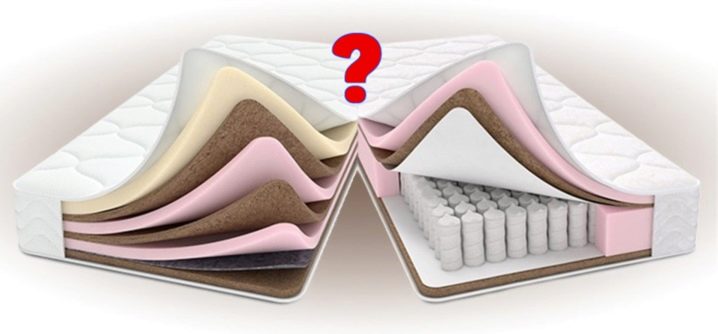
The choice of a mattress for a bed requires a particularly careful approach. It depends on how correct and comfortable not only rest, but also sleep will be. Choosing from two types of blocks it is difficult to get confused without knowing which mattress is better: spring or springless, because each type is divided into separate categories with its own characteristics and advantages.
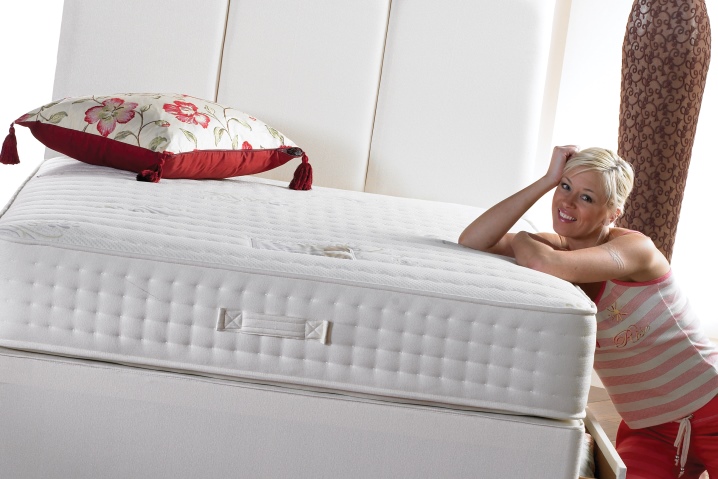
Springless mattresses: types, pros and cons
Modern mattresses without springs are worthy competitors of spring mattresses. They are developed using computer technology to help maintain the correct position of the spine with different levels of body load.
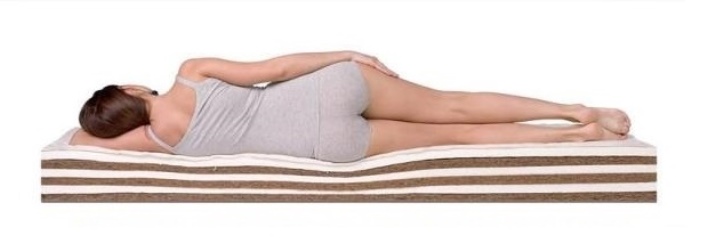
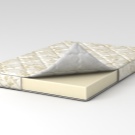
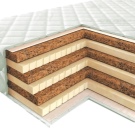
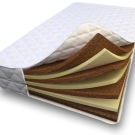

By their type of structure, mattresses are of three types:
- monolithic - representing a cast block of one filler, which does not have additional packing on either side (it can be dense without holes or with them);
- combined - mattresses, which are based on a block of one-piece padding fabric, which is supplemented with one or more layers of padding from another material to ensure the required degree of rigidity;
- flaky - mattresses resembling a puff cake in section, since they are made of several layers of different materials of the same thickness (about 3-4 cm each).
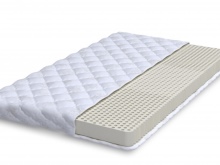
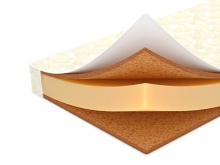
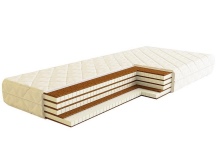
Among the wide range of stuffing materials, the most popular mattress components for furniture companies are:
- natural latex - a filler with a porous structure in the form of cells of different depths and diameters, produced from the tree sap of tropical hevea, characterized by excellent performance characteristics, long service life and high cost;
- artificial latex - analogue of latex filler, which is a budget type of block of such a plan with good indicators of reliability, rigidity and density, designed for a daily moderate weight load;
- polyurethane foam - furniture foam rubber of the HR type, which is somewhat inferior to the characteristics of latex mats and, unlike them, does not have a porous structure and does not distribute the mattress to different weight zones, however, it has good density and elasticity;
- coconut fiber (coir) - a fibrous substance, compressed into a narrow solid brownish layer, produced from the pericarp (peel) of a coconut. Hard filler with orthopedic effect and prevention of joint diseases;
- Memory foam - a material with a memory effect, characterized by memorizing the contours of the body when heated, which is in origin a modified polyurethane foam with a reduced degree of elasticity, developed by NASA engineers;
- struttofiber - packing with a vertical arrangement of fibers, not subject to decay and having excellent operational properties, changing the degree of temperature depending on the additional layer (a layer of flax gives a feeling of coolness, goat down - warm);
- sintepon - an additional component of the springless block, necessary to soften the rigid surface of the block, which is an elastic fibrous substance;
- felt - a thin layer, often used in the combined principle of the block, necessary for varying softness and warmth (a component of two-sided blocks of winter-summer models, in which, on one side, a thin cotton filler is added, on the other - felt, so that sleeping is not only softer , but also warmer).

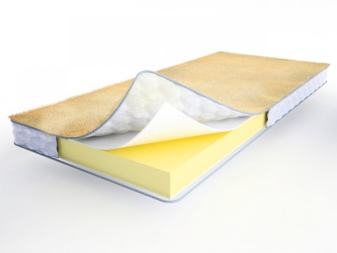


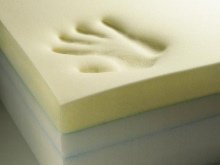
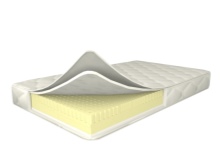
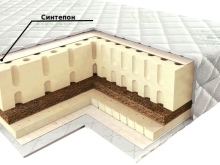
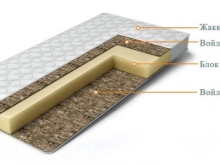
Each stuffing material is different from the other, however, it is quite compatible with any of them and often complements the rigid structure of the block in order to achieve the required rigidity. The best option for springless packing is a latex block. Often it is combined with a coir, which gives the mat an orthopedic effect and excludes its sagging.

A polyurethane mattress is considered a budget mattress option. It is divided into two categories: standard foam rubber type "T" and furniture cast plan. The first subspecies is similar to a spongy sheet of foam rubber, which has the lowest performance. The second (polyurethane foam) mattress is quite elastic and dense.
It does not deteriorate over time, although it may change slightly in color and bend slightly in the center if the owner has a heavy body.
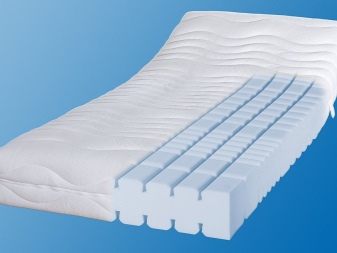
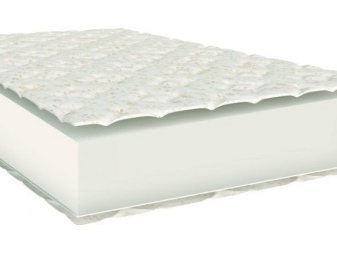
Advantages of a mattress without springs
Mattress designs without springs have a number of advantages, they are:
- convenient and comfortable to use;
- ensure the correct position of the body with different levels of stress;
- do not tear or injure the skin;
- are made of hypoallergenic material, therefore they exclude redness and itching of the skin, do not interfere with the rest of the body;
- have not only relaxing, but also massage, anatomical and orthopedic effect, restoring working capacity, improving well-being and raising mood for the whole day;
- can be elastic, roll-up and light or dense, thick and unbendable (suitable for any customer's requirements);
- differ in a variety of size groups, so you can buy a mattress not only for an adult and a child, but also for a non-standard bed size;
- can have not only the main, but also an additional removable cover, which simplifies the care of the mattress;
- do not rot, do not fade and do not have an environment for the formation of fungus or mold;
- resistant to moisture: after allowing water to pass through, they dry naturally optimally quickly;
- do not have large voids in which dust can accumulate, therefore, they are not burdensome to care for;
- do not have springiness, therefore they do not deform;
- provide for the presence in the line of two-zone systems, divided into two areas with different degrees of rigidity (for two people of different weight);
- include a wide range of single-sided and double-sided designs with different types of packing (hard on one side and soft on the other).
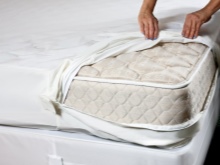


Minuses
The disadvantages of springless mats include the high price of latex models and some combined mattress options. The cost indicator is related to the type of filler used: the more expensive the components, the higher the price of the mat. Unfortunately, this factor often confuses buyers, forcing them to look for more acceptable options not to the detriment of their preferences and budget.

Not all rigid structures of a mattress without springs are designed for excessive weight and careless operation. For example, you cannot jump on coconut mattresses: they are not elastic and can break. They have a small thickness, so they are not suitable for those who have a lot of weight.
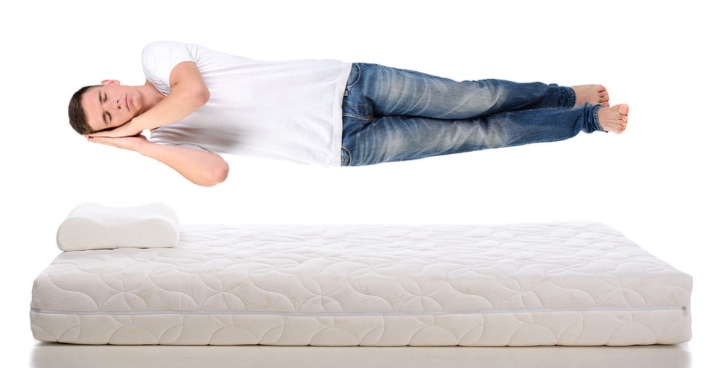
Varieties, pros and cons of spring models
Spring mattresses have been known for a long time. The modern principle of their work is somewhat different from the original, so they are in the spotlight and are no less popular than springless counterparts.
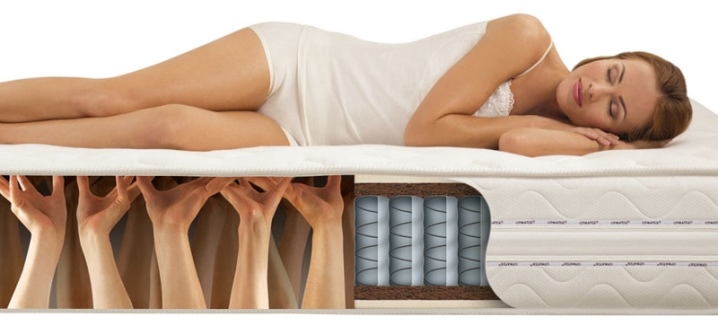
Unlike three types of springs (snake, bonnel and independent type), a spring mattress has only two:
- dependent;
- independent.
Snake is the base of a sofa or bed, but is not a mattress.A separate (independent) block is placed on it, therefore the snake is a kind of alternative to lattice wood lamellas, although it is inferior to them in that it is springy and does not reduce the load on the mat.
The first type of spring block design is called Bonnel and represents metal elements of a twisted shape, which are located vertically (perpendicular to the base of the mat), are connected not only to the mattress mesh itself, but also to each other (depend on each other under load). Block with independent springs arranged somewhat differently. At the base, there is a steel mesh and vertical springs of a twisted shape. However, they are individually packaged in breathable fabric, so they don't stick together.
In order for the mesh to be solid, it is not the springs that are fastened, but the covers. Such a system provides the block with the advantage of maintaining the correct position of the spine in any state (lying or sitting).

In some types of spring blocks, for maximum effect, a second spring is added to each spring, which begins to compress only under increased load. This adds reliability to the structure and extends the life of the mattress.
One of the features of spring blocks is the need to use springless fillers in them. This is necessary for two reasons:
- without a soft filler, the springs will dig into the body;
- in addition to elasticity, the block must be given the correct rigidity.
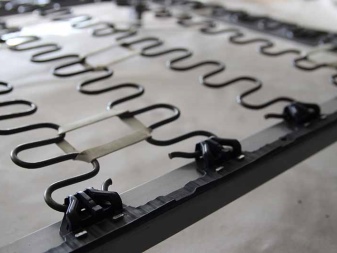
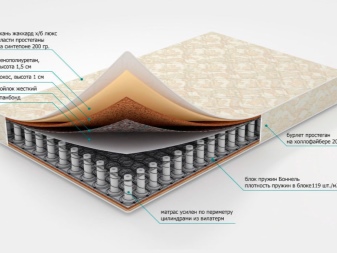

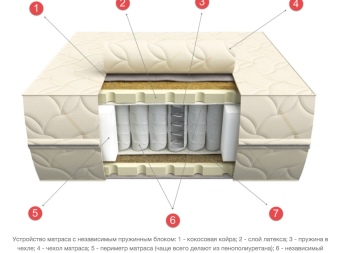
The advantages of spring mattresses include:
- practicality and strength of the metal frame of the mattress;
- comfort and convenience in combined block designs;
- support of the correct position of the spine in the mats of an independent type;
- long-term operation of the mat due to the combination of springs and springless filler;
- reduction of pain and anatomical support of the back during sleep and rest on the bed;
- a large selection of models of universal and non-standard size, designed for a different number of berths;
- different number of springs depending on the structural features of the block (from 500 to 700 pieces in a grid);
- availability in the line of variants with double springs, designed for two places with different weight categories.

The disadvantage of the models is the tensile properties of steel elements. Such structures are sensitive to instantaneous loads. Do not jump on them, stretching the springs, because this will affect the service life of the block.
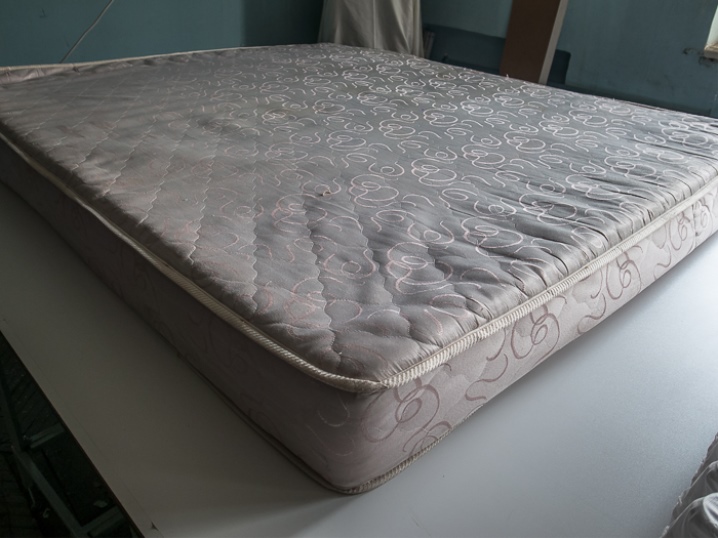
The main differences between mattresses: comparison of qualities and indicators
Each type of mattress has its own advantages and disadvantages. Both in one and in the second type there are very good options for stuffing, thanks to which the mattress will be not only comfortable, but also as correct as possible for the position of the body.
General. Regardless of the type of block, mattresses are designed to provide quality sleep, so necessary in a fast paced life. It is on them that the index of bed stiffness depends. According to the degree of rigidity, both types of mattresses are:
- soft;
- medium hardness;
- tough.
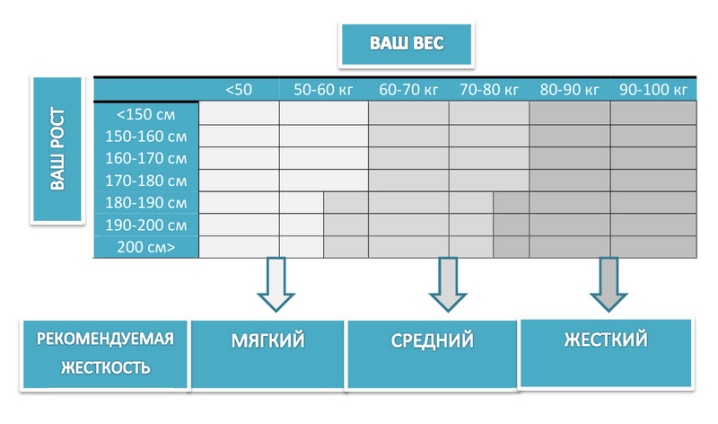
Each type is designed with a specific weight in mind. For example, soft mats are not intended for overweight people, because in this case they will quickly sell out and force a person to take unnatural positions instead of comfortable sleep. Rigid structures of both types are in the same demand. Depending on the model, they are designed for an average weight of one or two people and imply a load of up to 100 (1 piece) and about 200 kg (two places).
Hard mattresses are not a wooden base at all. In fact, it is an elastic and firm variety, one of the most beneficial to human health. Due to the composition of the filler, in both cases, rigid mats are the prevention of diseases of the musculoskeletal system. It is important to know that they do not treat back, lower back and neck problems, but relieve muscle tension by relaxing them, which reduces pain.
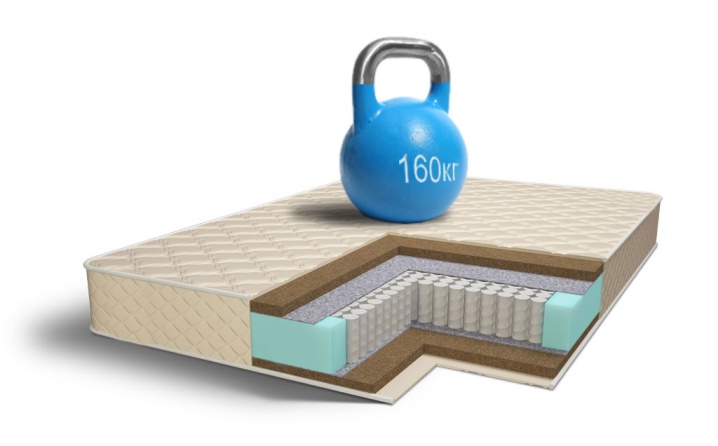
Differences. The main thing worth noting is the noiselessness of the springless mattresses. Since they do not have metallic elements that stretch under load, they cannot squeak under pressure. Due to the absence of steel elements, springless mattresses are safe for health. Even with their intensive use, the filler does not fall out and does not stick out, which in spring mats can injure the skin.
Due to the metal components, innerspring mattresses are capable of accumulating static electricity, exerting a magnetic effect on a person. There is no magnetic field in mats without springs. In themselves, spring mattresses are not orthopedic and need additional layers to achieve an optimally firm surface. Springless options can be independent, while having not only an orthopedic effect, but also the correct multilevel load distribution in some models (on each of the seven sections of the block).
If we compare the spring block of an independent type Pocket Spring and a latex mat, their service life is approximately the same (15 years). At the same time, in terms of operational characteristics, they are approximately equal, provide correct support for the spine and relax muscles while a person sleeps.
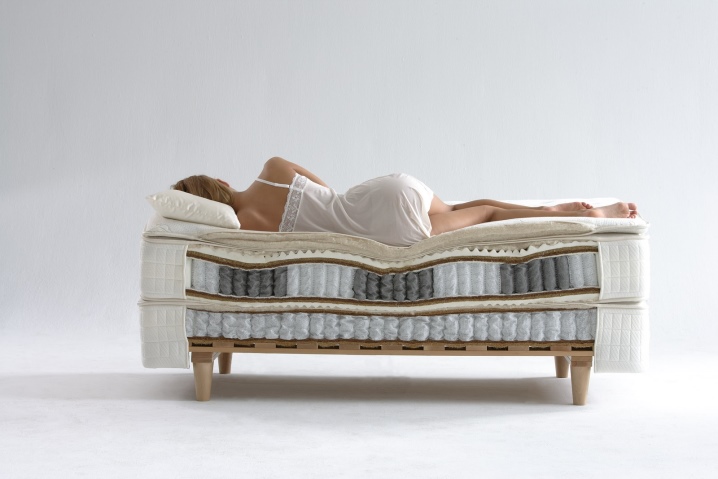
The spring block "Bonel" is distinguished by the reinforced edges of the mat, which affects the quality of rest and is a disadvantage of such mattresses. One of the characteristics of the options with dependent springs is wave formation, which is not available in springless counterparts. In addition, unlike packing without springs, spring-loaded structures can trap moisture, which can cause rust.
One of the interesting differences is the fact that springless padding materials can be either with a core or with a block interlayer, while varying the degree of rigidity (for example, a block with a latex core and a coconut interlayer will be rigid, and the version with a coir in the center and latex at the edges - moderately hard). Springs always remain the heart of the block, they can only be located inside.

How to choose the right type?
When choosing the ideal type of mattress, it is important to rely on knowledge of the features and stated requirements. It should be noted that mattresses for adults and children are different, therefore they are selected strictly individually. They are selected based on weight, height and existing health problems. It is important that the mat is able to relax the muscles in the desired areas of the body and provide minimal pressure on the spine without deforming it.
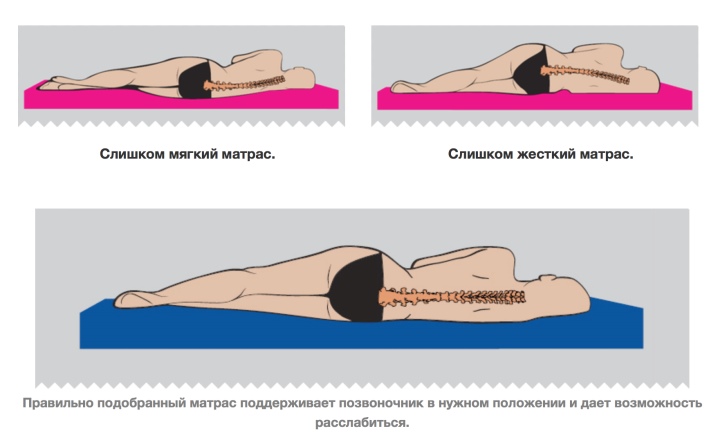
For a child
When purchasing a mattress, it is important to know that savings in this case are unacceptable. Thanks to a large selection of models of structures, you can find a really good option that prevents the appearance of back problems and improper posture development.
When buying a children's mattress for a child, it is important to take into account the following recommendations of specialists:
- when choosing a filler, it is worth giving preference to hypoallergenic materials or packing of natural origin with antimicrobial impregnation;
- spring mattresses are completely contraindicated for young children, which can harm the correct formation of posture and the skeleton as a whole;
- the mattress for the baby should be matched exactly to the size of the crib in order to exclude the possibility of injury to the limbs;
- a universal purchase "for growth" is unacceptable, because what is suitable for an adult is not always good for a child;
- when choosing a children's mattress, you should take into account the age, choosing up to 3 years - a hard block, from three to adolescence - a variant of moderate hardness (ideally, this is a whole coconut block or a combined version of latex and coir);
- the block should not be too thick: a thickness of 8 - 10 cm is sufficient.
In addition, when buying a children's mattress, you need to take care of an additional removable cover, because such an accessory is a must. Thanks to him, the mattress will always look like new.

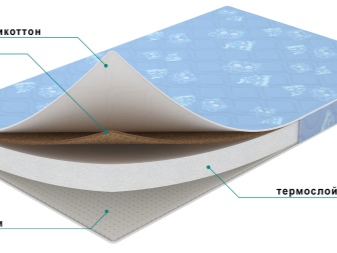
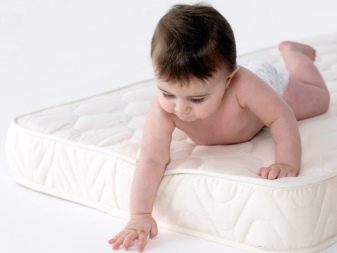
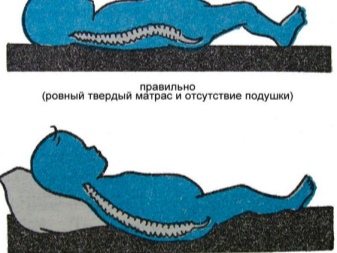
For an adult
What you need to pay attention to:
- In order for the mattress to promote a serene and proper sleep, you should not buy soft options. Such a filler will be pressed through faster than the others, so the "T" type foam rubber may not even be considered. If the mattress is meant to be used for a long time, it is worth investing the right money by choosing between three designs: a combination of latex and coir, a latex block or a version with independent springs.
- Don't forget about your age. For example, when buying a model for an elderly person, you should give preference to mattresses with a moderate degree of hardness: they are contraindicated as too soft and too hard types of mattresses. The same rule applies to patients who are sensitive to even a light touch to sore spots of the body.
- It is important to keep in mind the correct dimensions of the mattress. You cannot make a purchase without taking into account the parameters of the bed: the lack of length or width of the berth will affect the quality of sleep and threaten with chronic lack of sleep, because the body must straighten out overnight. If the mattress turns out to be larger than necessary, it will not fit into the allotted space of the bed and may bend, forming bumps and disrupting the natural position of the spine.
- Don't buy a spring mat with a motion transmission: the springiness transmitted by the principle of a wave from each turn on the bed will deprive sleep of comfort.
- Foam rubber of the standard type may not even be considered: this filler is permissible only as an interlayer of the lateral edges of the spring block, although in general it is both the cheapest and the most low-quality type of packing. As a rule, it will not be enough even for 5 years of service: it will quickly lose its properties.
- If a person's weight is large enough, it is worth giving preference to springless block options. The heavy body will overpower the spring mat too quickly, stretching the twisted elements and deforming the surface.
- When choosing an option for an adult, you should adhere to the rule: the lighter the weight, the softer the surface (as opposed to children who need a hard surface to properly form the skeleton).
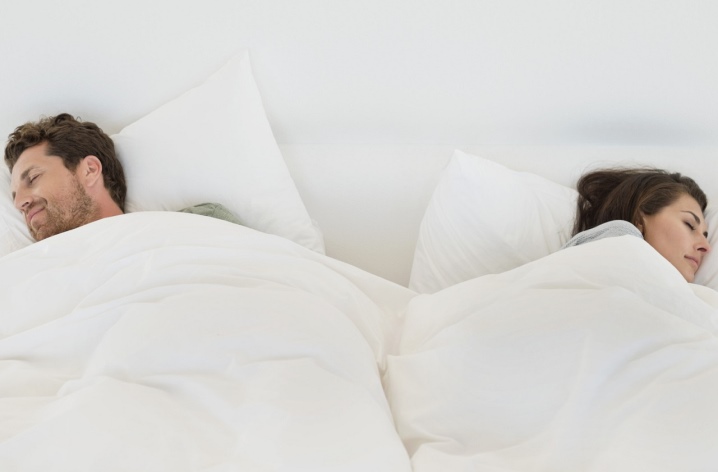
Reviews
Buyers' opinions on the choice are mixed. The reviews left on the forums of manufacturers and stores of relevant products are quite vivid:
- About springless. Some buyers prefer springless mattresses, choosing them for their quietness, density and lack of wave formation under weight load. Fans of such mats in the comments note the optimal rigidity and durability of the blocks under constant use.
- About the orthopedic effect. There are many opinions on the orthopedic effect of the blocks. A significant preponderance towards springless mattress models is noticeable here. Reviews suggest that it is the springless options that are better suited for the prevention of pain in the back, lower back and extremities, relieving painful sensations and numbness of the extremities.
- About spring mattresses. Forums devoted to the topic of choosing between a spring and a springless block have a lot of heated discussions in which buyers note the reliability of blocks with springs. Fans of such designs highlight mattresses with independent springs. These mats will not squeak even after several years of daily use. Sleeping on these mattresses is convenient and comfortable. Customers note that in the morning they wake up refreshed and cheerful, ready for a new working day.
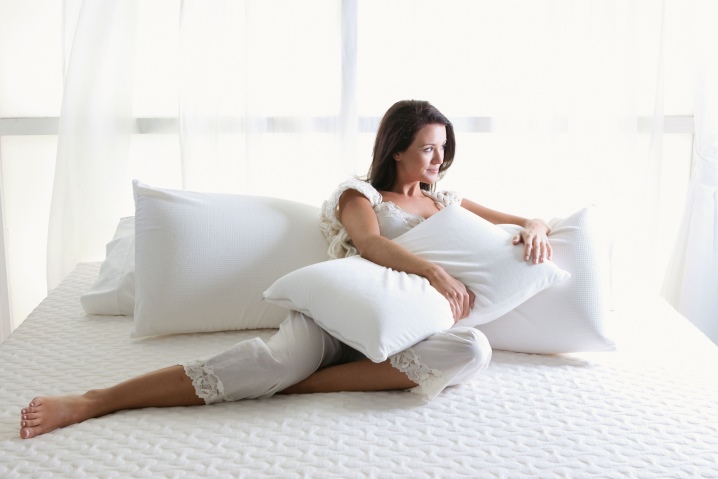
How to choose the right mattress - in the fragment of the program "It's great to live!"













The comment was sent successfully.